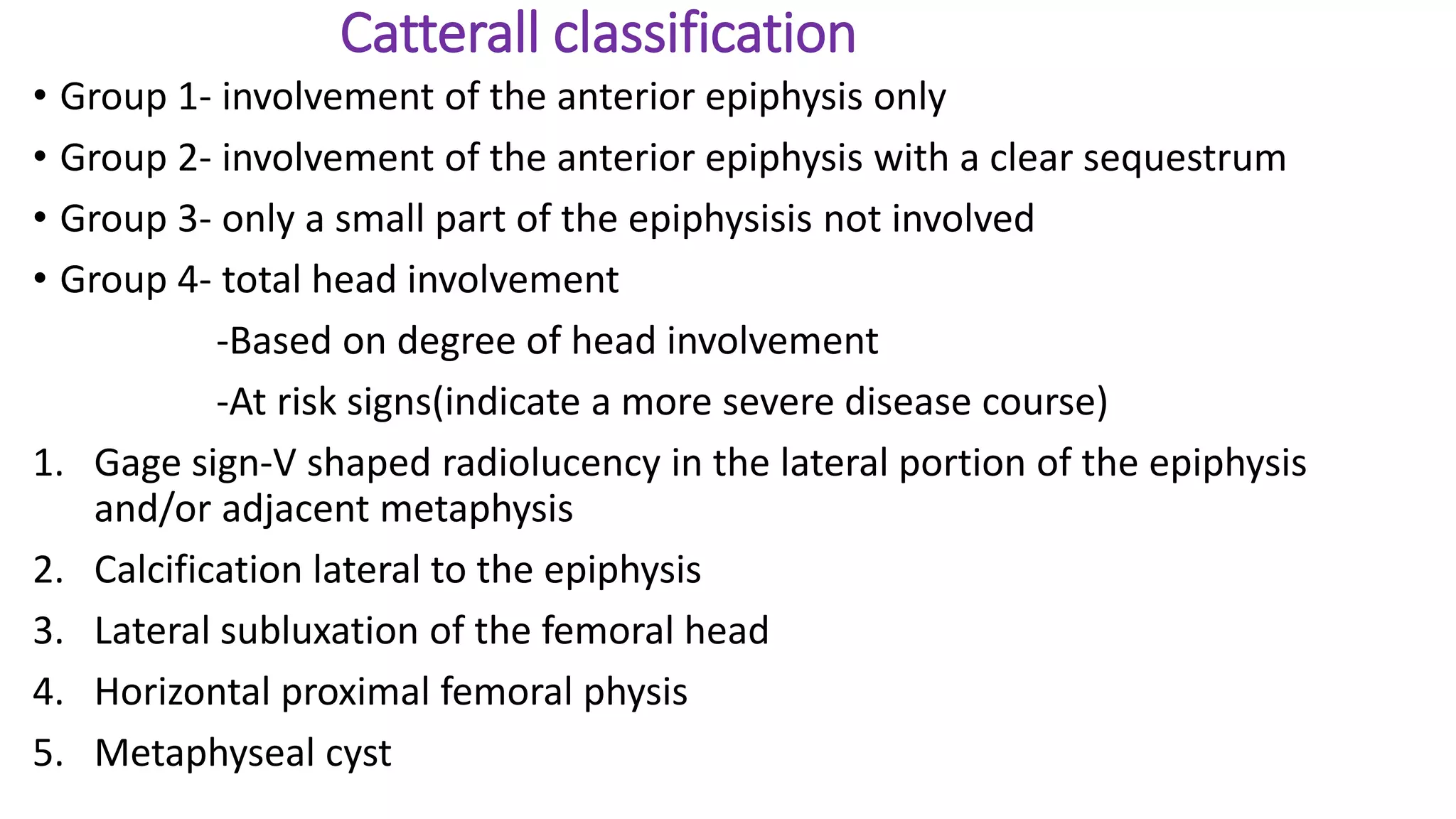Legg-Calve-Perthes disease is a self-limiting condition affecting the femoral head in children. It presents with limp and hip or knee pain in boys aged 4-8 years. Diagnosis is made based on x-ray findings of femoral head collapse and MRI evidence of avascular necrosis. Treatment depends on age and severity but involves containment of the femoral head through casting, bracing or surgery to prevent deformity and allow remodeling. The goal is to achieve a spherical femoral head and prevent osteoarthritis.













































